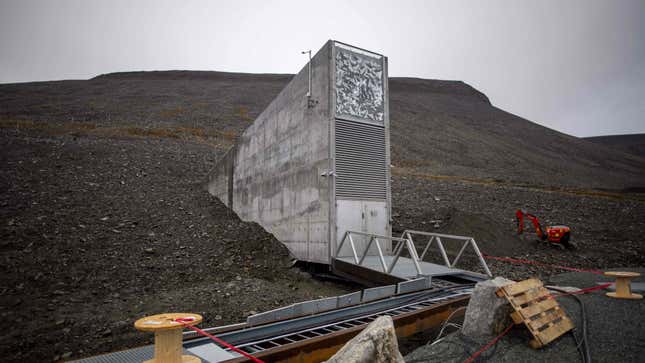
A remote seed vault on the Arctic island of Spitsbergen is receiving new deposits this week from gene banks in Africa, Europe, the Middle East, and Oceania. Nicknamed the ‘Doomsday Vault,’ the depository is opened only a few times a year for seed withdrawals and deposits; it will be sealed again on February 18.
Holding over 1.1 million seed samples from 5,400 different plant species, the Svalbard Global Seed Vault is a major means of conserving genetic diversity in crops. The vault’s stores reflect the crops on which humankind is most dependent: It has over 150,000 strains of wheat and rice and over 80,000 types of barley. The vault can hold up to 4.5 million samples.
The gene banks involved in this week’s activity hail from Sudan, Uganda, New Zealand, Germany, and Lebanon, according to Reuters. The Lebanon-based group is the International Center for Agricultural Research in Dry Areas, the organization that made the first withdrawal from the vault in 2015. Previously, the organization was based in Syria, where some of its collections were damaged during the country’s civil war, forcing the group to draw on the Arctic vault’s stores. The organization will be depositing around 8,000 seed samples.
“The fact that the seed collection destroyed in Syria during the civil war has been systematically rebuilt shows that the vault functions as an insurance for current and future food supply and for local food security,” Norwegian International Development Minister Anne Beathe Tvinnereim told Reuters.
In 2020, the vault received seeds from the Cherokee Nation, where the botanical duplicates can be safeguarded in case the unpredictable weather in Oklahoma devastates the local crops.
“One of these monstrous storms would be enough to wipe out our community gene banks, so [the Svalbard Global Seed Vault] is a real safety box for us,” Pat Gwin, senior director of environmental resources for the Cherokee Nation, told Earther at the time.
The vault will open twice again this year—once from June 6 to June 10 and again from October 24 to October 27, according to the vault’s website.
Being stored in the vault doesn’t guarantee the seeds’ preservation. In 2017, warmer-than-normal temperatures caused a deluge near the entrance tunnel. But as you may know if you’ve ever lost a password, having multiple copies of any crucial information is nonetheless helpful.